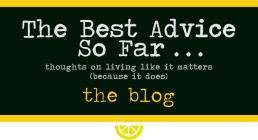it is what it is(n’t)

So that fried egg in the image above … it’s not real.
Nope. The original isn’t a photograph, either, nor was it digitally created.
In actuality, it was hand drawn – completely flat, shadows and all – by Sushant Rane, a 19-year-old kid from Mumbai. Don’t believe me? Check out Sushant’s Instagram page HERE. (Just scroll down and hit “Load More” to see the start of his 3D artwork, including progressive photos and videos to prove they are, in fact, flat; I hope you have a free hour or so on your hands, because you’re about to say goodbye to it.)
There’s no doubt that this young guy has an almost uncanny talent. But he also has something else: perspective. He saw what was not before it was. Then he took an ordinary, blank piece of paper and the same art supplies available to you or me, and he made them come alive in a way that fascinates and stretches the imagination. In a very real way, then, his unique perspective is changing the perspectives of every person who views his art, as well.
Oh, by the way, Sushant first put his hand to attempting 3D art like this less than a year ago.
In a very real sense, bad writers (or poor communicators in general) can make the most interesting topic feel stilted or dull, while strong writers (and communicators) can hold audiences rapt talking about nothing more than the grass. I was working with a high-school student today on understanding connotation and the power of words to create mood. We first had a short discussion about the concept of mood continuum, from negative on the left to positive on the right, with neutral dead center. I then pointed to a simple wooden chair that sits in the corner of my living room and asked, “Is that chair positive, negative or neutral on our continuum?”
I love that look that comes over someone’s face, especially in the eyes, when real curiosity and learning are happening. And it was happening.

The fact is that the chair in the corner is neither positive nor negative. It really doesn’t even stand a good chance of being neutral, due to individual perspective. Could this chair remind someone of a dear grandmother? Or might it remind them of a similar chair in which they often sat facing a wall after having been scolded as a child? Is it a reminder of simpler times gone by? And, if so, does that bring calm, nostalgia or a sense of anxiety in comparison to the less-simple realities of the present?
Words are power. How we use them can cause a neutral thing to seem positive, or a potentially positive thing to feel negative.
When I introduced you to the chair, I said it was a “simple wooden chair.” For most people, the word “simple” would lean positive in this context. But I could just as easily have introduced it to you as “a solitary wooden chair,” in which case, without your even being conscious of it, your mental mood-continuum would have slipped left of neutral.
How about some other word choices?
a plain sturdy chair
an old wooden chair
a Shaker-style chair
a paint-stained chair
Each of these things is a true reflection of the chair. But focus and word choice change how a listener or reader feels (or even how I myself feel) about the very same chair.
In today’s talk with the aforementioned teen, I moved from the chair example to a well-known video clip from Singin’ in the Rain. It starts with a classic kiss under an umbrella, after which Kathy Selden says to Don while unnecessarily fussing with his coat lapels, “Take care of that throat. You’re a big singing star now, remember? This California dew is just a little heavier than usual tonight.”
In fact, it’s pouring buckets. But with a kiss, a bit of attention and concern, and the right word choice – “California dew” – Don strolls off into that downpour without a care in the world, delivering one of the most famous dance scenes in movie history.
By the way, don’t try to squirm out of my examples before you allow me to get to the point, claiming, “Well, that’s all well and good; but he was an actor in a movie, not a real person like me.” Quoting from IMDb:
So there.
The central theme of The Best Advice So Far is this: “You always have a choice.” It’s inspiring to me to think about Gene Kelly making the choice to go ahead with things that day, despite being “under the weather” in more ways than one. What might that scene have turned out like if it had been choreographed and rehearsed to death, rather than expressed in the moment at the whim of a determined guy with a positive outlook?
There’s nothing inherently great about a grayish blank piece of paper, or art supplies. Come to think of it, there’s nothing awe-inspiring about a fried egg. But Sushant sees something there. And with belief and effort, he brings something new to the world – to his world and ours.
Words don’t always wind up on a page. They aren’t always spoken. Thing is, we are talking to ourselves all the time about what we believe to be true about our lives. About circumstances. About people. About ourselves.
Stop.
Look around you. What do you see?
Do you see a nagging mound of laundry? Or do you see just how fortunate you and your family are to own so many clothing options?
Do you see political opponents? Or do you see multifaceted and interesting people who might broaden your thinking, people with whom you likely have more in common than you have at odds, if only you were to look for it?
Is the rain a miserable and depressing downpour? Or is it just a “little-heavier-than-usual California dew”?
Is your chair old and paint-stained? Or is it sturdy, simple and reliable?
Do you see an empty page or endless possibilities?
Life is what you choose to make of it. After all …
You always have a choice.







Beautiful… Absolutely beautiful. The power to change so much is within our incredible minds:))
Hello! How nice to see your comment as the first on this post. Makes me want a fried egg sandwich as only you can make them. 🙂
Great post, Erik. Ah, once again it comes down to a matter of perspective, over which we have control, and therefore, choice. 🙂 Amazing drawing, I thought it was an egg. And I loved the bit about Singing in the Rain – a favorite movie. Hope you are well and enjoying some spring weather. Have a great week.
Thank you, Diane. This one felt good to write (you know what I mean). Reading your comment, it has me thinking about just how many of your own words you’ve used to encourage others – (hint: it’s a lot) – and, therefore, how many other people’s realities you’ve influenced in a positive way. Kind of fun and inspiring to think about!
Oh, and I watch Singin’ in the Rain at least once a year myself and quote from it often! One of my favorites: https://www.youtube.com/watch?v=amc8fev6Gwk
My daughter loved Gene Kelly when she was about 4 years old. We’d snuggle on the couch and watch together. Thanks for the kind comment. I try to be positive and encouraging – it’s selfish, though – the alternative doesn’t sound like any fun at all! 😀
You selfish thing, you! For shame! 😀
I love the image of you and your daughter enjoying a classic.
Great post, Erik.
I think one of the duties of the artist is to give us bold new perspectives through fictional scenarios that real life doesn’t — can’t — afford us. It’s part of the reason I like genre fiction so much, particularly anything having to do with sci-fi/fantasy/the supernatural: Through their magical conceits, stories like It’s a Wonderful Life, Back to the Future, and Groundhog Day give us insights into human nature we wouldn’t otherwise have. Teachers can do this, too, through clever examples, as you illustrated with the “simple wooden chair.” It’s amazing how a small shift in perspective — sometimes incited by nothing more than word choice — has the capability to open pathways to previously unseen and unimagined worlds.
I spend an unusual amount of time actually considering the old exclamation “What’ll they think of next!” When you see where art and story (and music and sports and dance …) have taken us over time, it’s staggering to see the things that humans have been able to do with imagination and effort. Can’t wait to explore your own “previously unseen and unimagined world” later this year!
As fate would have it, I’ll be publishing a post on my own blog this week about perspective, and how it applies to the notion of personal/professional accomplishment as well as the institution of friendship.
By the way: Singin’ in the Rain is a terrific film still, and that dance number is just as enthralling as any of today’s CGI spectacles — more so, in fact, because of the ingenuity it took to pull it off.
I agree with your thoughts on classics vs. CGI. I think this often regarding many media forms, including video games. I don’t think it’s just nostaligia when I note that older pixel-based video games generated more curiosity and imagination than the modern, ultra-realistic, super-high-def games (and the time before ANY video games inspired even MORE curiosity and imagination, since it required the seeds of the adventures to come from within).
I’ll be sure to check out your post this week!
I linked to your article!
[…] perspective acquired over time […]
Words – matter – pretty important to have a good vocabulary in order to know what is being said and so you can frame your thought to say exactly what you want. Need to have a big collection in order to choose wisely and choose the best (thoughts or words).
Attitude does come from within – and the words connected to what is seen or done are important … which leads back to the fist sentence……
What a circular pattern of thought we have.
A circuitous pattern it is. 😀
Whenever I teach reading or vocabulary to kids who think it’s dry, I teach from a standpoint of the enormous power of words. I give them an almost mystical quality (which they actually have). They can be used to help or harm people (including the listener or reader, without a deep mastery of them). They can get you a job you want – or cause you to lose the opportunity. They can change your entire outlook on life from negative to positive – or vice versa. By the time the kids’ eyes are bugging out, I know they are ready to learn (or continue learning) in the right frame of mind. It all gives new context to an otherwise dry topic like “knowing your audience” or “voice and tone” in Literature.
Thanks for helping to further elucidate. 😉
all good points. One word can hold so much history, too – the origin, its’ travels, how it has changed, and the impact when used. CLue a kid into all a word is and can do, and that awareness can shift them into a whole new path and way of looking at things. Give them the power.
Exactly.
Kid … or adult. (After all, as I say often, adults are just kids in older bodies.)
So true. People just stretch out as they age – basically staying the same as they were around 4-5 yrs. Seen a lot of anecdotical evidence of this. HA HA
You said everything I tried to say, and couldn’t in such a beautiful way! <3
What a nice comment, especially for a blogger. Thanks, Nicia.
You’re welcome. 🙂